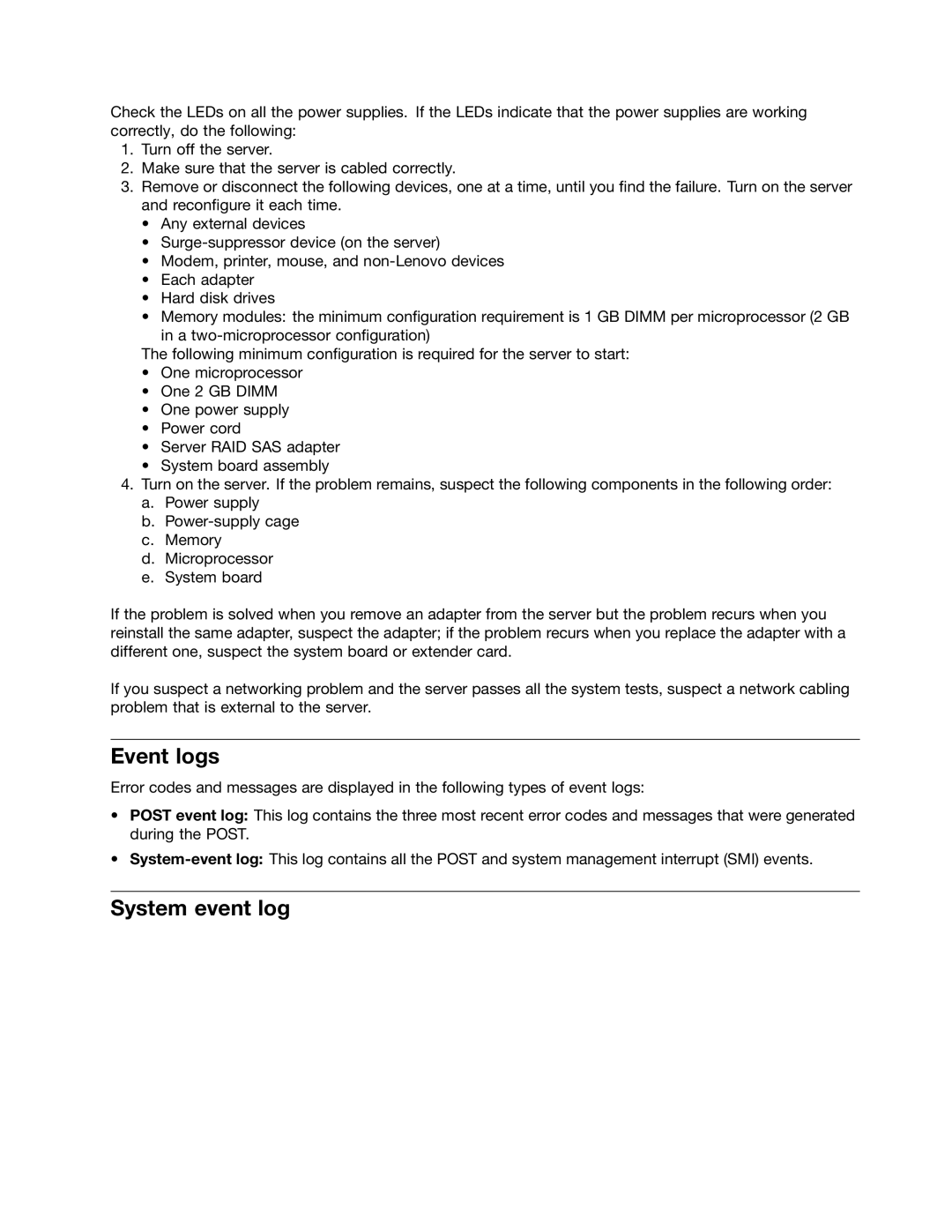
Check the LEDs on all the power supplies. If the LEDs indicate that the power supplies are working correctly, do the following:
1.Turn off the server.
2.Make sure that the server is cabled correctly.
3.Remove or disconnect the following devices, one at a time, until you find the failure. Turn on the server and reconfigure it each time.
•Any external devices
•
•Modem, printer, mouse, and
•Each adapter
•Hard disk drives
•Memory modules: the minimum configuration requirement is 1 GB DIMM per microprocessor (2 GB
in a
The following minimum configuration is required for the server to start:
•One microprocessor
•One 2 GB DIMM
•One power supply
•Power cord
•Server RAID SAS adapter
•System board assembly
4.Turn on the server. If the problem remains, suspect the following components in the following order: a. Power supply
b.
d. Microprocessor e. System board
If the problem is solved when you remove an adapter from the server but the problem recurs when you reinstall the same adapter, suspect the adapter; if the problem recurs when you replace the adapter with a different one, suspect the system board or extender card.
If you suspect a networking problem and the server passes all the system tests, suspect a network cabling problem that is external to the server.
Event logs
Error codes and messages are displayed in the following types of event logs:
•POST event log: This log contains the three most recent error codes and messages that were generated during the POST.
•
System event log
The BMC implements the system event log (SEL) as specified in the Intelligent Platform Management Interface Specification, Version 2.0. The SEL is accessible regardless of the system power state via the BMC's
Diagnostic programs and messages
Whenever possible, the BIOS outputs the current boot progress codes on the video screen. Progress codes are
Chapter 3. Diagnostics 25
